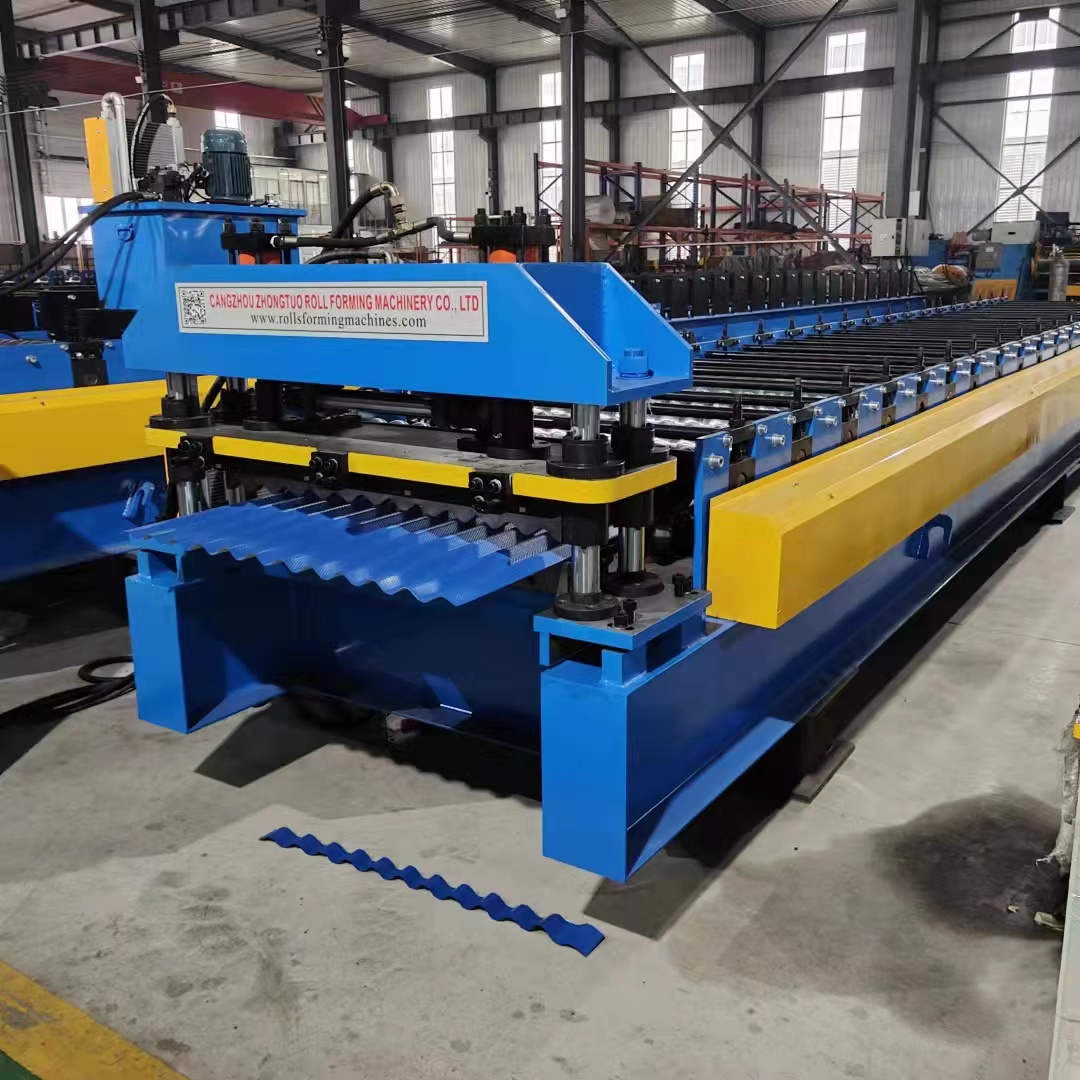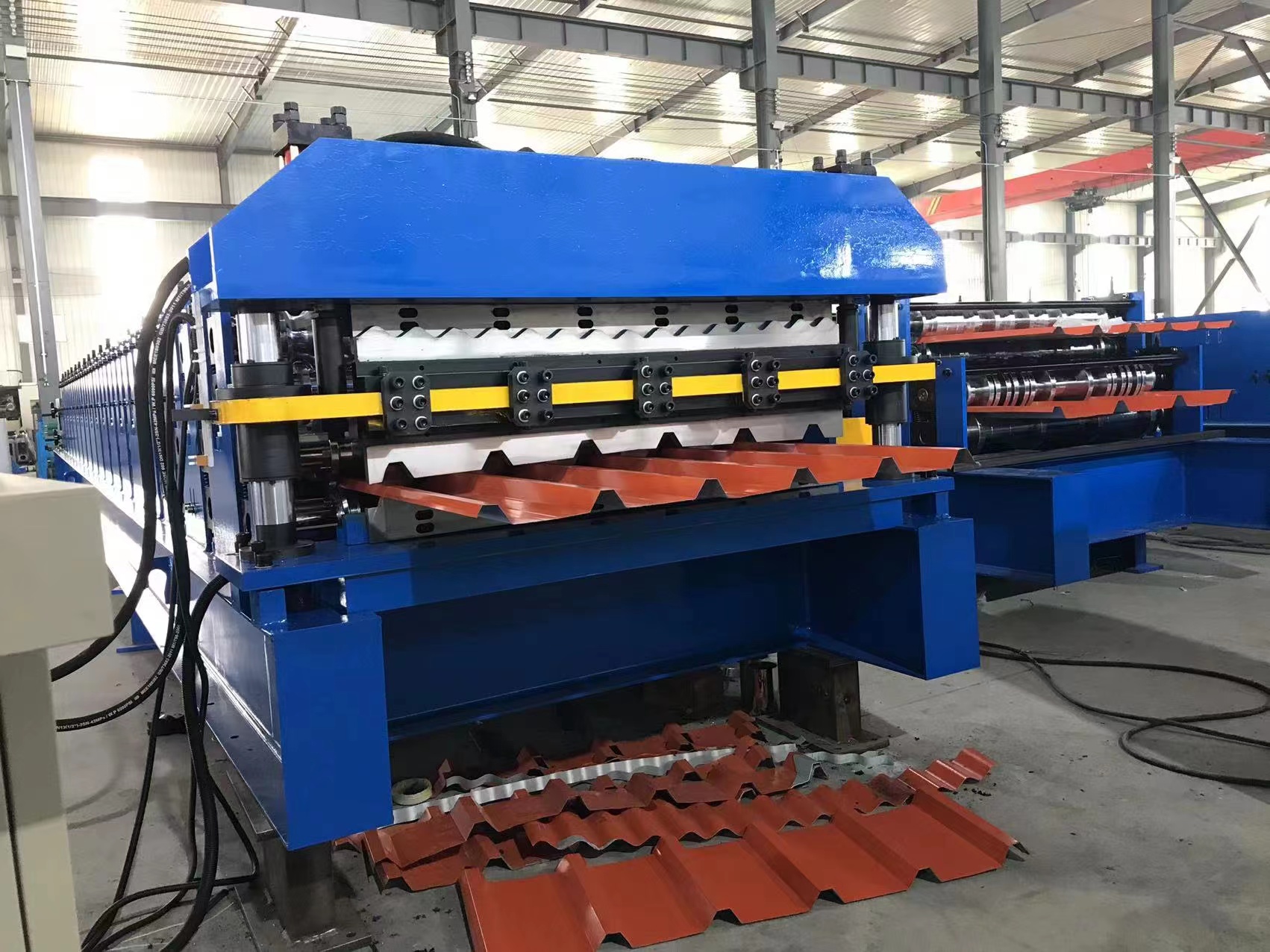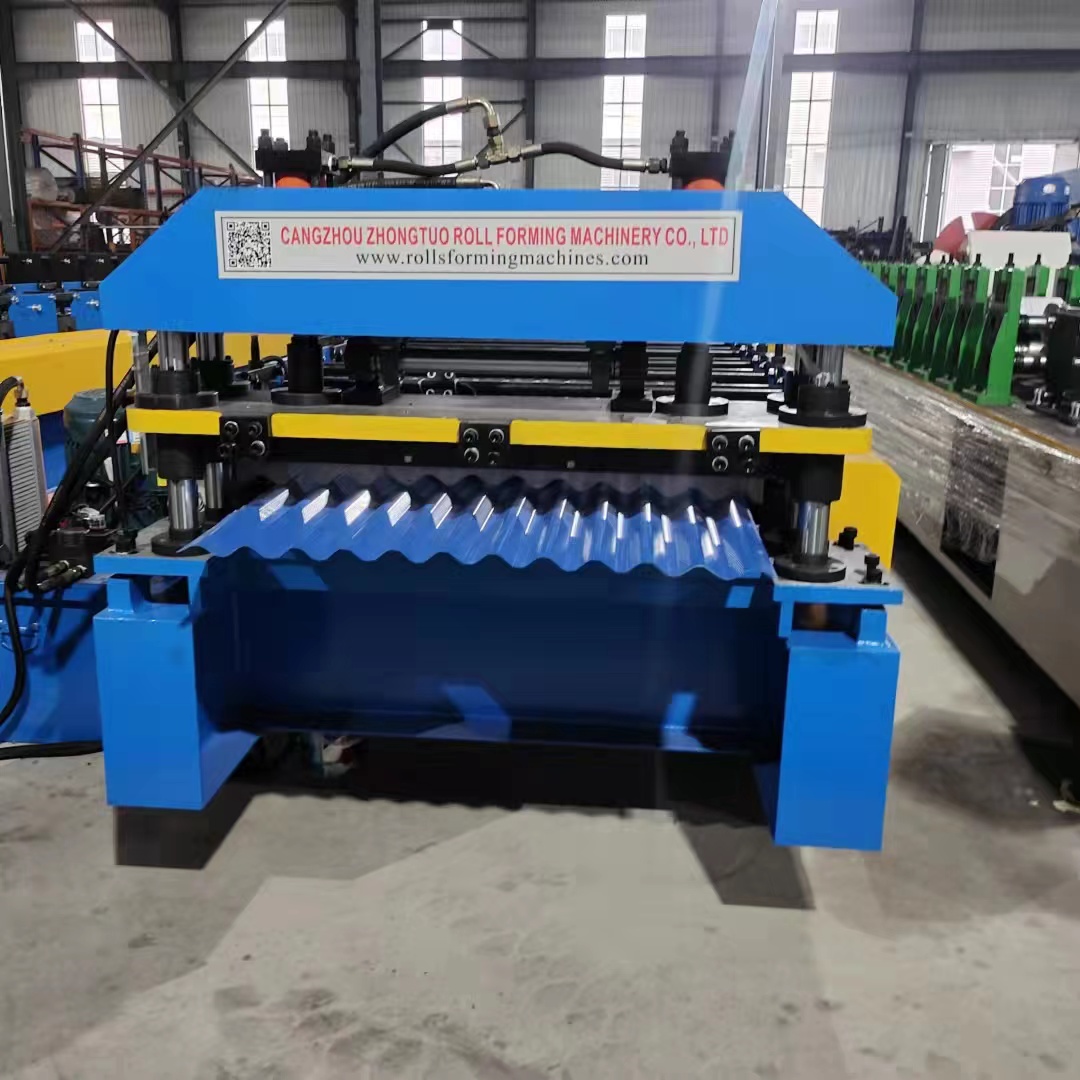What’s The Difference Between Double Layer Roofing Sheet Roll Forming Machine And a Single Layer Roofing Sheet Roll Formi
Introduction: When it comes to roofing sheet roll forming machines, there are two main options to consider: the single-layer machine and the double-layer machine. Each type offers distinct advantages and considerations based on the profiles they can produce, the space they occupy, and the work time required. In this article, we will explore these factors to help you make an informed decision when selecting a roofing sheet roll-forming machine for your business.
A single layer roofing sheet roll forming machine:

A double-layer Roofing Sheet Roll Forming Machine:

Profiles Produced: A single-layer roofing sheet roll-forming machine is capable of producing only one profile at a time. It can manufacture trapezoidal tiles, corrugated tiles, or glazed tiles, but not simultaneously. On the other hand, a double-layer roofing sheet roll-forming machine has the ability to produce two different profiles. Each layer is responsible for manufacturing one profile, allowing for combinations such as IBR tile-IBR tile, IBR tile-corrugated tile, IBR tile-glazed tile, corrugated tile-corrugated tile, and corrugated tile-glazed tile.
Space Requirements: In terms of space, it is important to consider the footprint of the machinery. Two single-layer roofing sheet roll-forming machines will occupy more space compared to a single-layer machine. If your workspace is limited, opting for a double-layer machine can be a space-saving solution without compromising production capabilities.
Work Time and Production Capacity: Work time and production capacity are critical factors to consider when selecting a roofing sheet roll-forming machine. Two single-layer machines can operate simultaneously, allowing for increased production capacity. This is particularly beneficial if you have high demand and need to meet deadlines efficiently. On the other hand, a double-layer machine does not allow both layers to work simultaneously, potentially limiting the overall output. However, for businesses with smaller production needs or limited resources, a single machine, whether single or double layer, may suffice while providing cost savings.
Cost Considerations: For entrepreneurs starting a new business, cost-saving measures are often a priority. The choice between a single-layer or double-layer roofing sheet roll-forming machine depends on your budget and production requirements. If your production capacity needs are not substantial, investing in a single machine, regardless of the layer configuration, maybe the most economical choice. It allows you to save on initial investment costs and operational expenses while meeting your production demands efficiently.
Conclusion: Selecting the right roofing sheet roll-forming machine is crucial for the success of your business. Understanding the profiles they can produce, the space they occupy, the work time required, and the associated costs will help you make an informed decision. If you have significant production requirements and sufficient workspace, a double-layer machine can offer versatility in producing multiple profiles. However, if you are just starting your business and have limited resources, a single-layer machine may be a cost-effective solution without compromising production capacity. Evaluate your specific needs and consider these factors to choose the most suitable roofing sheet roll-forming machine for your business.


